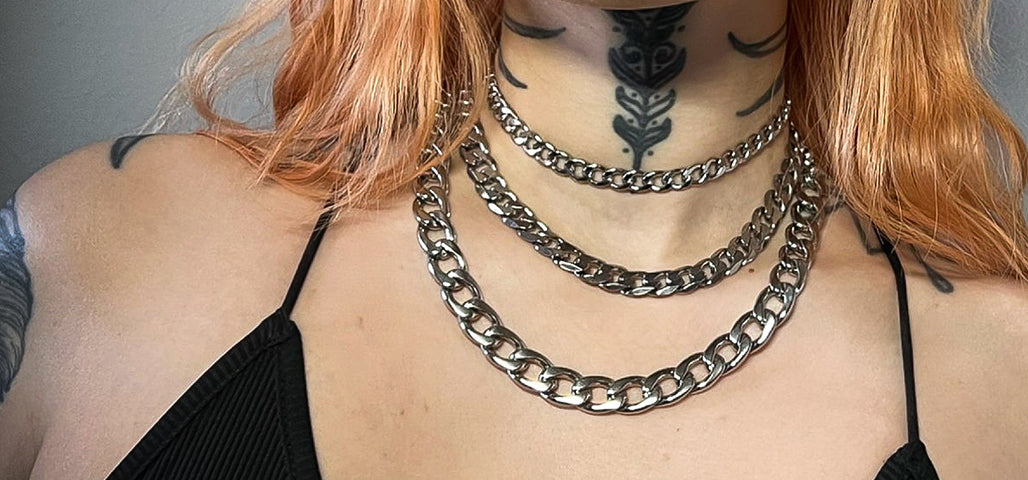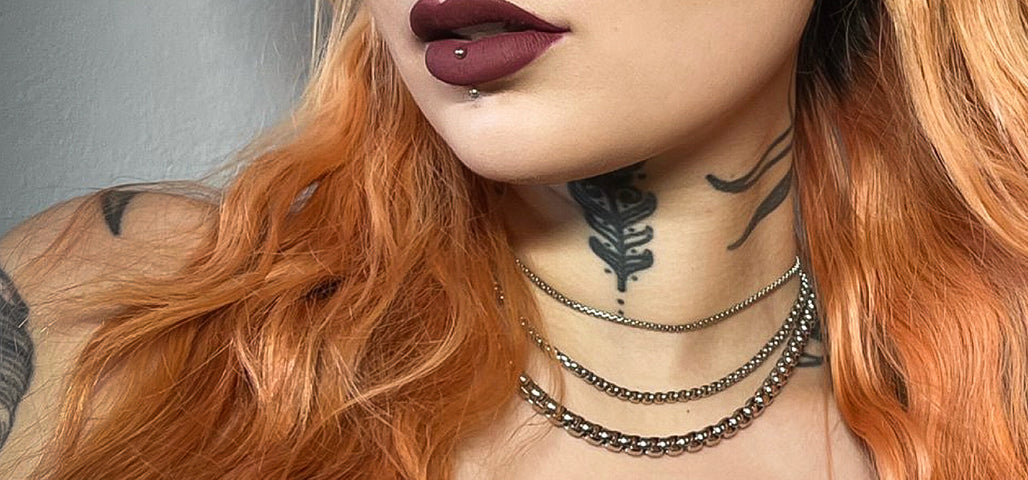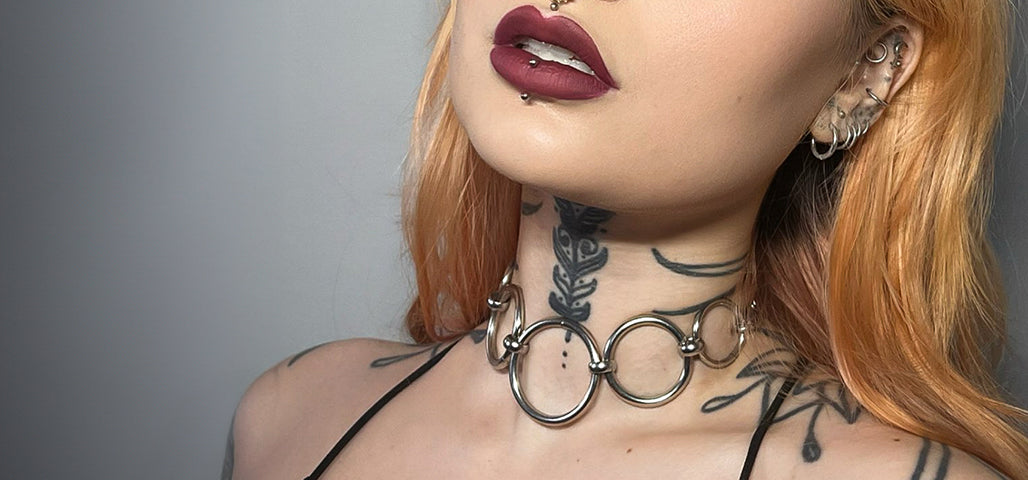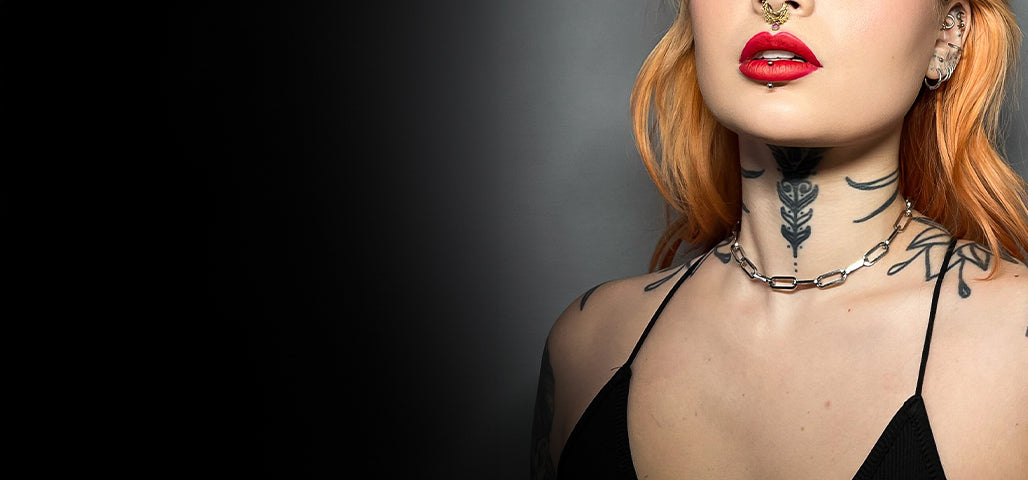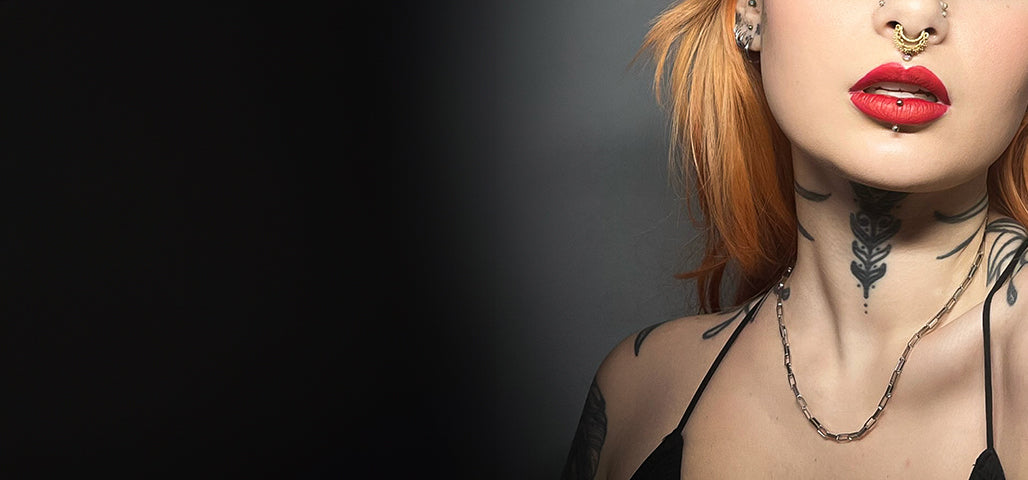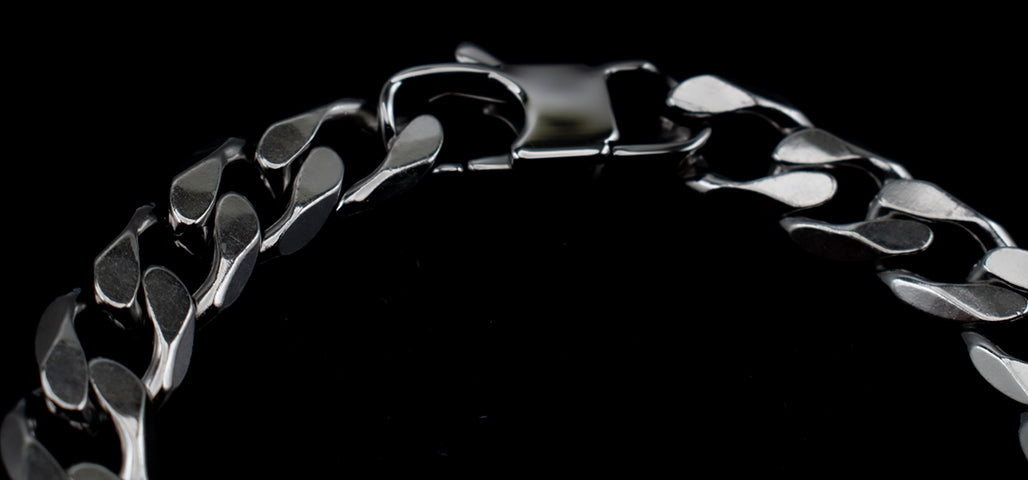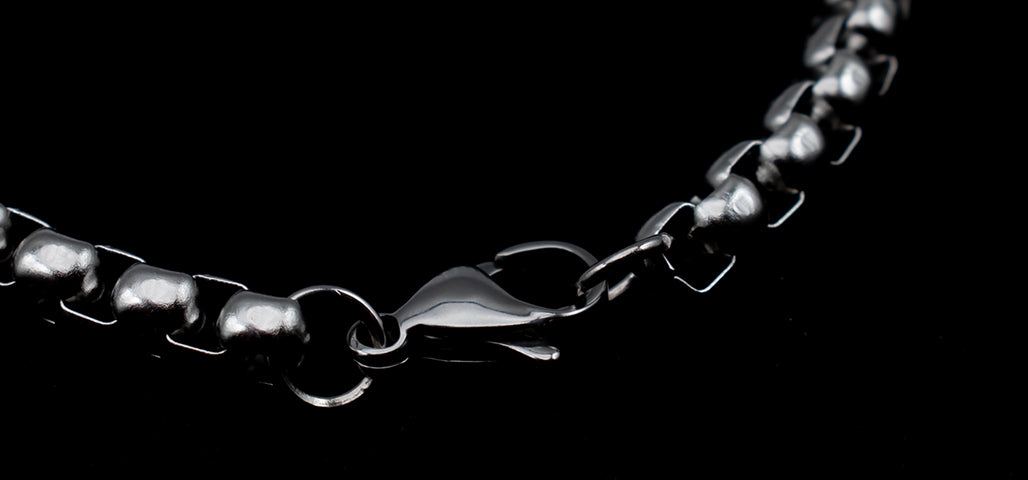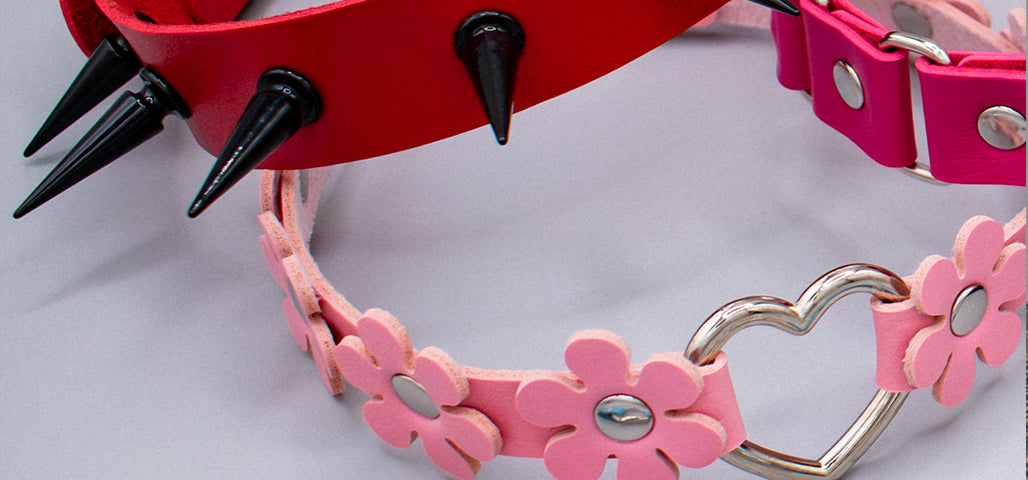Article: The Captivating Evolution of Chokers: A Timeless Accessory Steeped in History

The Captivating Evolution of Chokers: A Timeless Accessory Steeped in History
For centuries, chokers have captivated the hearts and adorned the necks of individuals across diverse cultures and social strata. These close-fitting necklaces, typically ranging from 11 to 16 inches in length, have transcended mere adornment to become symbols of submission, power, rebellion, and self-expression. From the opulent courts of ancient civilisations to the catwalks of modern-day fashion, chokers have woven an intricate tapestry of stories, embodying the spirit of each era they have graced.
Antiquity's Gilded Embrace
The origins of chokers can be traced back to the ancient realms of Sumer and Egypt, where artisans meticulously crafted these necklaces from precious metals and gemstones. In Mesopotamia, around 2500 BC, the Sumerians donned golden chokers, imbuing them with mystical powers believed to offer protection and healing. Across the Nile, the ruling Pharaohs of Egypt embraced these regal adornments, their chokers serving as symbols of authority and divinity.
The Talmudic Tradition
Chokers found their place in religious texts as well, with the Talmud, the central text of Rabbinic Judaism, mentioning them as common accessories worn by women in the First Century A.D. This testament to their widespread acceptance underscores the timeless allure of these neck-hugging jewels, transcending cultural boundaries and religious beliefs.
The Victorian Vogue
As the centuries unfolded, chokers weaved their way into the fashions of the elite, particularly during the Victorian era. Queen Alexandra, the wife of King Edward VII, popularised the trend by wearing chokers to conceal a scar on her neck, inadvertently igniting a sartorial phenomenon that swept through the upper echelons of society. Affluent ladies of the time adorned themselves with bejewelled chokers, their opulent designs reflecting the era's penchant for extravagance and refinement.
The Roaring Twenties and the Allure of Rebellion
The dawn of the 20th century ushered in a new era of daring self-expression, and chokers became a symbol of the rebellious spirit that defined the Roaring Twenties. Flappers, the iconoclastic trendsetters of the Jazz Age, embraced chokers as a bold fashion statement, challenging societal norms with their unconventional choices. Long strands of pearls, affectionately dubbed "dog collars," became particularly fashionable, embodying the era's audacious spirit and penchant for pushing boundaries.
The Gothic Allure and the BDSM Connection
In the latter half of the 20th century, chokers took on a darker, more provocative persona, intertwining with the gothic subculture and the world of BDSM (Bondage, Discipline, Dominance, Submission, Sadomasochism). The close-fitting nature of these necklaces, coupled with their association with submission and power dynamics, imbued them with an aura of mystery and sensuality. Velvet, leather, and stainless steel jewellery became popular materials, reflecting the edgier aesthetics of these countercultures. In BDSM culture, the choker—sometimes referred to as a day collar—symbolises submission or dominance, acting as a discreet signifier of the wearer’s involvement in the lifestyle.
The Nineties Revival and the Grunge Aesthetic
The 1990s witnessed a resurgence of chokers, with the accessory becoming an iconic staple of the grunge and alternative fashion movements. From black velvet to tattoo-inspired designs and plastic or leather variations, chokers embodied the nonconformist spirit of the decade. They became a symbol of rebellion and individuality, adorning the necks of those who dared to challenge the mainstream.
The Modern Renaissance: Chokers on the Catwalk
In recent years, chokers have experienced a renaissance, gracing the runways of renowned fashion houses and adorning the necks of celebrities and style icons alike. Designers have reimagined these timeless accessories, experimenting with a myriad of materials, textures, and styles. From delicate diamond-studded masterpieces to bold, chunky chains, chokers have seamlessly transitioned into the contemporary fashion lexicon, appealing to a diverse range of tastes and aesthetics.
The Symbolism of Submission and Power
Throughout their storied history, chokers have been imbued with symbolic meanings that transcend mere adornment. In the realm of BDSM, they have come to represent submission, with their close-fitting nature serving as a visual representation of the power dynamics inherent in these practices. Conversely, chokers have also been associated with authority and dominance, particularly when worn by those in positions of power or influence.
The Allure of Sensuality and Femininity
Chokers have long been celebrated for their ability to accentuate the feminine form, drawing attention to the delicate curves of the neck and collarbone. Their intimate placement against the throat, a symbolic locus of communication and vulnerability, imbues them with an undeniable aura of sensuality. Whether adorning the neck of a Victorian socialite or a modern-day fashionista, chokers have the power to captivate and allure, elevating the wearer's confidence and allure.
The Versatility of Styles and Materials
The enduring popularity of chokers can be attributed, in part, to their versatility in styles and materials. From delicate chains adorned with precious gemstones to bold, chunky designs crafted from stainless steel, velvet or faux leather, the range of options is vast and ever-evolving. This diversity allows individuals to express their unique personalities and styles, seamlessly transitioning from casual daytime looks to formal evening ensembles.
The Timeless Appeal of Rebellion and Individuality
Chokers have long been associated with rebellion and nonconformity, serving as a sartorial statement for those who dare to challenge societal norms. Whether embraced by the punk and goth subcultures or adopted by fashion-forward trendsetters, these neck-hugging accessories have become a canvas for self-expression, allowing wearers to showcase their unique identities and reject the constraints of mainstream fashion.
Styling Chokers: Elevating Outfits with Effortless Elegance
In the modern era, chokers have become a versatile accessory, effortlessly elevating outfits and adding an undeniable touch of sophistication. From pairing delicate diamond-studded chokers with cocktail dresses to complementing casual ensembles with bold, chunky chains, the possibilities are endless. Styling chokers requires a keen eye for balance and an understanding of personal style, allowing individuals to create looks that seamlessly blend elegance and edge.
The Enduring Legacy: Chokers as Timeless Fashion Icons
As we explore the rich tapestry of chokers' history, one thing becomes evident: these captivating accessories have truly stood the test of time. From the gilded courts of ancient civilisations to the cutting-edge catwalks of today, chokers have transcended eras and cultures, adapting to the ever-evolving tides of fashion while retaining their timeless allure. Whether adorning the necks of royalty, rebels, or modern-day style icons, chokers remain a powerful symbol of self-expression, sensuality, and the enduring human desire to adorn oneself with beauty and meaning.
Conclusion: The Timelessness of Chokers and Their Cultural Significance
The choker's ability to reinvent itself while retaining its essence is a testament to its timelessness. Its evolution from an ancient adornment to a modern accessory reveals the choker's enduring appeal. As it continues to adorn necks in myriad forms, the choker remains a symbol of personal and cultural expression, echoing the whispers of history while hinting at future possibilities.
In the end, chokers are more than just a trend—they are a personal statement, a nod to a rich history of adornment, rebellion, and beauty. Whether through choker fashion, gothic chokers, day collars, or bdsm chokers, this iconic accessory transcends time, inviting wearers to explore its depths and meanings.

